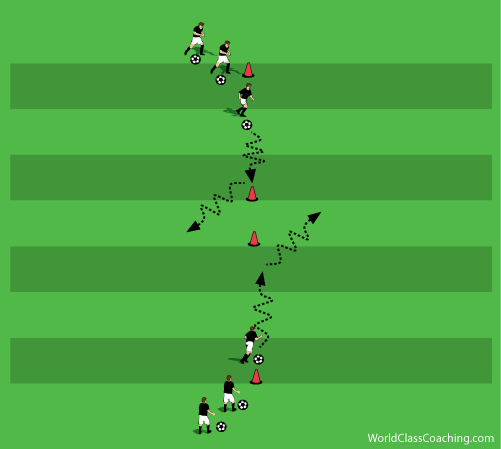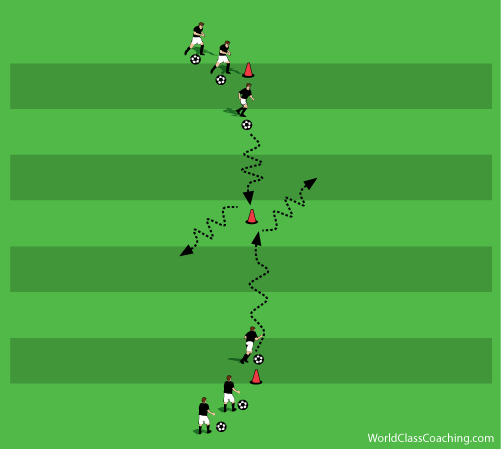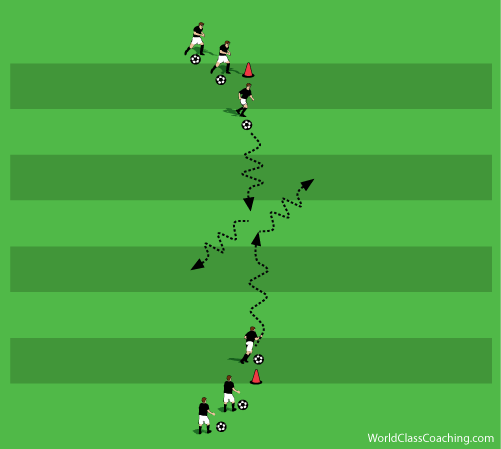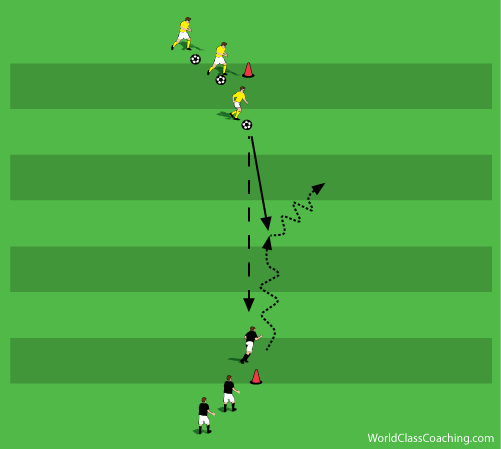In the month of June I'm going to focus on my four favorite ways to train 1 v 1 attacking. These same exercises can also be used to train the defender but I only coach one side of the ball in each drill, exercises or small-sided game. I'll begin with the simplest progression and move to the most complicated just as I would do when training a team.
The first 1 v 1 exercise I use with a team involved two lines of players facing each other. To begin with, each player has a ball. The first players in each line dribble toward the center cones and change direction to the right before they reach the cone nearest them. This is then done to the left.
The players are then asked to use a fake before the cone and play away to the right side. You can tell the players to use a certain move, which I often do at the beginning of the season, or let the players decide as long as they play away to the right of the cone, which works well once the players have a variety of moves that they can perform.
The next step is to put the two center cones together which brings the players closer together while doing their move. This puts added pressure on the players because of the possiblity of a collision if they don't use their fake and change direction early enough.
Then the middle cone is removed and the players are asked to use a move as they approach the other player. This requires timing because they don't want to collide with the other dribbler but they also don't want to use the fake too soon because that wouldn't be realistic.
The final progession is to have one player pass the ball to the other and then act as a defender. At first the defender is passive and just stays in
front of the attacker until they use a fake and dribble away. As the players gain confidence the defenders are allowed to attempt to win the ball.
These are basic progressions that put the focus on dribbling to set-up the defender, using a fake and then playing away to beat the defender. In the next post I will describe how I take these coaching points and put them into a goal scoring environment.






